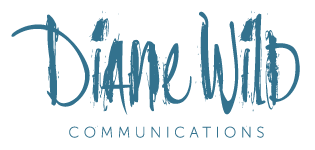The golden age of blogging might be over, overshadowed by other forms of social media as well as the rise of enewsletters, but rumours of its death have been greatly exaggerated. It can be harder to find an audience who will eagerly visit your site and read every post (not that it was ever easy), but a good content strategy is crucial for most organizations and solo entrepreneurs. A blog should be part of that strategy. Why?
Search Engine Optimization (SEO)
The boring reason. But important. And for some, this reason alone is enough. Search engine algorithms are complex and opaque, but having regular content updates helps with your website’s Google juice, which in turn helps potential clients find you. Unless you’re writing about topics that have nothing to do with your core business (please don’t), you’ll be naturally using key words relevant to your industry. Please for the love of authenticity don’t write yourself into keyword-heavy knots, but consider a meaningful title, meaningful subheads, using category tags, behind-the-scenes metatags, and proper format tags (e.g. < h1 >).
Soft marketing
A blog is not a good place for a hard sell, but it’s a good part of a marketing strategy. “Thought leadership” is an overused phrase, but if you post regularly, and share those posts to your social media channels, without even including a sales message you are reminding your contacts of your existence and your expertise. Your posts don’t have to be long (they probably shouldn’t be) or earth-shatteringly brilliant (though it’s terrific if they are), but they should be thoughtful and regular, and shared on all your social media channels. It should also be a seamless part of your website where what you do and your contact information is prominent.
An established PR practitioner I admire told me sharing her weekly blog posts is the only marketing she does, and she regularly gets business from people reaching out after reading one of her posts.
Find your community
If you’re an expert in your field, you should know who the other players in that field are. Whether they’re people who share your market, your profession, your industry, researching and promoting your blog can help you connect to this community on social media. Join conversations on Twitter and Facebook, comment on blogs, not to sell yourself or your blog but to be a trusted member of the community. This is the social part of social media.
Before I started the TV, eh? website, I became curious about the Canadian television industry and became a regular participant in industry blog comment sections (this was in that golden age of blogging, pre-Twitter). When I launched the site, I was already known and those industry people embraced and publicized the site.
Beyond your bubble
If you’re writing those thoughtful posts, and participating in your community, you’ll be in a perfect position to see opportunities to syndicate your posts or write guest posts for other sites, which increases your reach beyond your own circles.
Sold … now what?
If you’re sold on the reasons to have a blog, the next step is to consider how it fits into your content strategy … or to take a step back and create a content strategy … and how to get people to sign up to receive your blog in their inboxes. Briefly:
- Start with an editorial calendar. Can you commit to once a week? Biweekly? Monthly? I like Scott Stratten of Unmarketing’s philosophy that people aren’t waiting for your blog post on a Tuesday morning; they want to read a post when you have something to say. That said, an at least semi-regular schedule holds you accountable and prevents the blog from going fallow. Tie that editorial calendar to business goals first, then industry trends, seasons, holidays – anything that can give you a hook – and then allow for serendipity, inspiration, and ties to current events.
- Consider what free download or mini-service you can offer to get people’s email addresses. For simplicity I like using MailChimp’s RSS to email feature that automatically sends out blog posts to subscribers. The biggest benefit is that blog post email can be turned into a fuller-featured enewsletter by putting in a little more effort.
- Daphne Gray-Grant has a recent post with fantastic suggestions on how to generate and capture blogging ideas (see below). Her blog is a great one to follow for regular writing tips, and search her archives for even more advice on writing routines.


